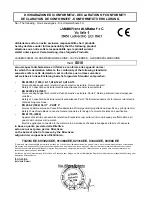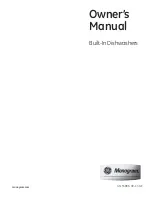
The drainage hose may be extended by a
maximum of 3 m (the total length of the drainage
hose must not exceed 4.5 m). Any joins and
connecting pipes must have an internal diameter
of at least 14 mm. However, the drainage hose
should ideally be replaced with a new hose
without joins.
No part of the drainage hose may be more than
950 mm above the bottom of the dishwasher.
The hose must not be routed directly to a floor
drain or the like. In such cases, the hose can act
as a siphon and empty the dishwasher.
The hose must always discharge at least 350 mm
above the bottom of the machine.
Ensure that the drainage hose has no kinks.
NOTE!
The hose must be attached at the same height
as the underside of the sink.
CONNECTION TO WATER SUPPLY
Use only the supply hose provided with the
dishwasher. Do not re-use old hoses or other
spare supply hoses.
The supply pipe must be fitted with a stopcock.
The stopcock must be easily accessible, so that
the water can be shut off if the dishwasher has
to be moved.
Once the installation is complete, the stopcock
should be opened to allow the pressure to settle
for a while and to check that all connections are
tight.
Connect to cold water...
If you use oil or electricity to heat your home.
Connect to hot water (max. 70 °C)...
If you use district heating, solar power or
geothermal power to heat your home. Choosing
a hot water connection cuts programme times
and reduces the dishwasher's electricity
consumption.
ELECTRICAL CONNECTION
Information about the electrical connection can
be found on the serial number plate. This
specification must match the electricity supply.
Dishwashers fitted with a plug must be connected
to an earthed socket.
The electric wall socket must be placed outside
of the installation area to be easily accessible after
installing the dishwasher. Do not use an extension
cord!
NOTE!
Repairs and maintenance relating to safety or
performance must be carried out by a qualified
professional.
27






































